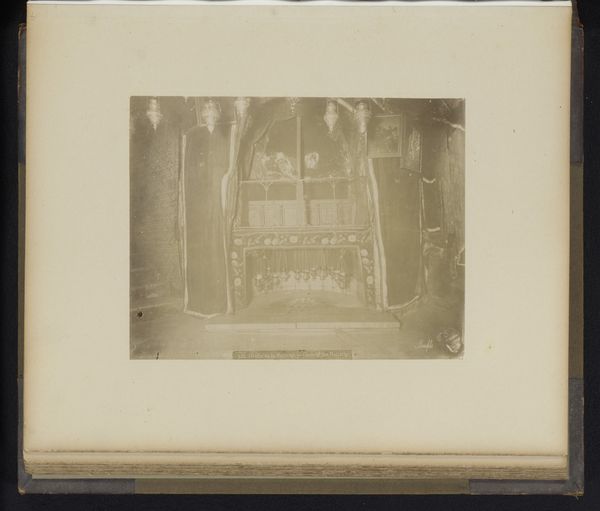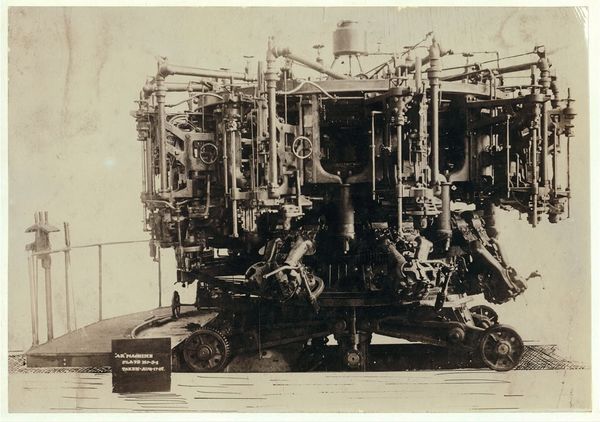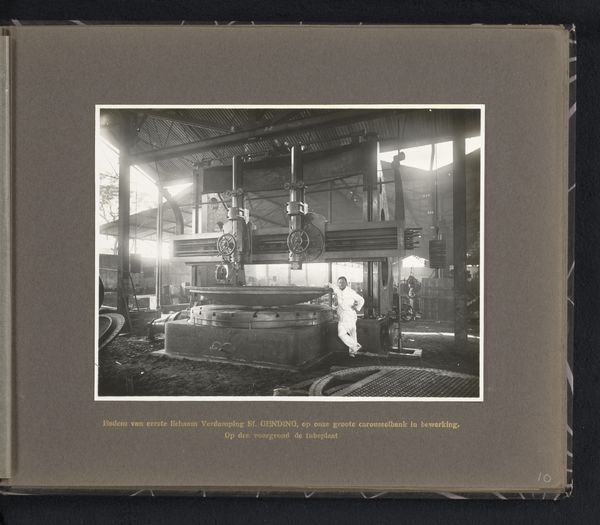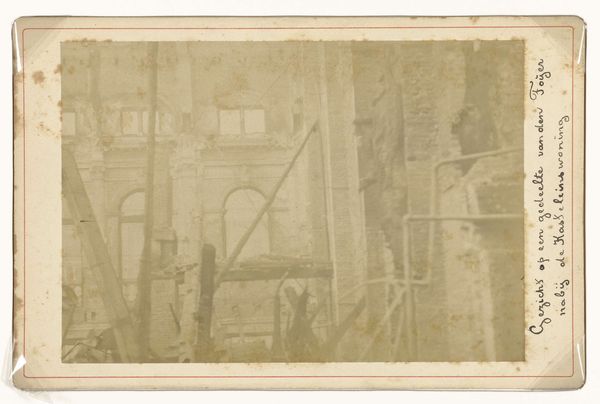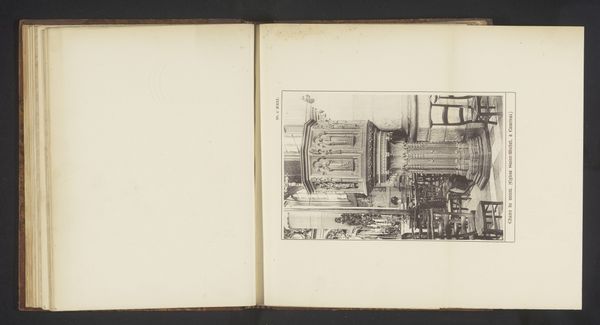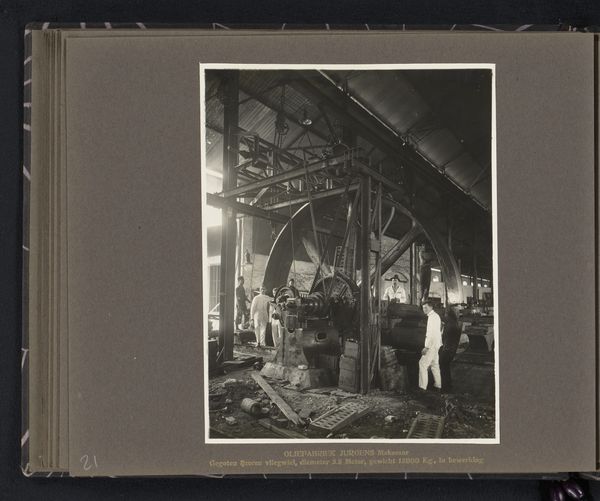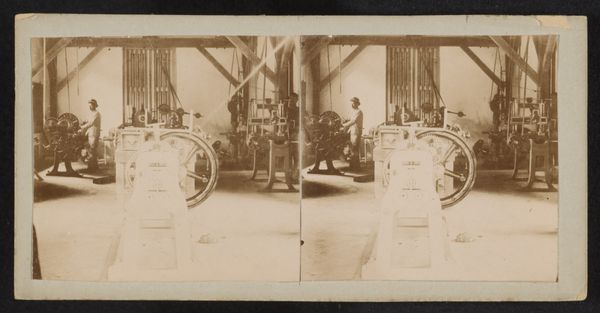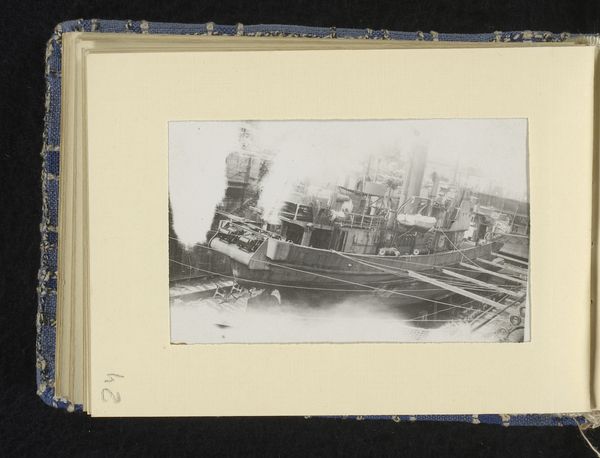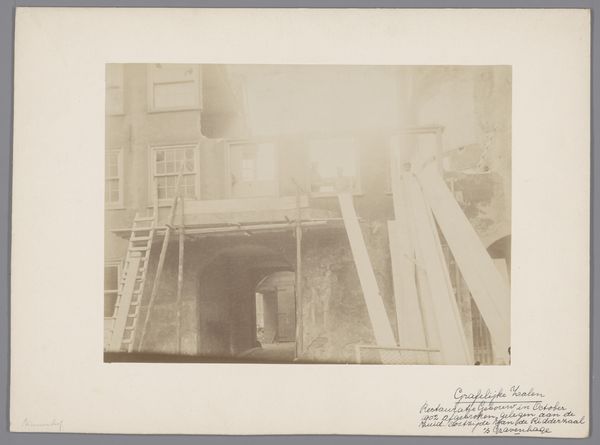
metal, photography
#
portrait
#
metal
#
sculpture
#
photography
#
derelict
#
photojournalism
#
realism
Dimensions: height 29.6 cm, width 39.7 cm
Copyright: Rijks Museum: Open Domain
Curator: This photograph, titled "Machine," dates from around 1875 to 1900 and is attributed to Gerard Stoof. What's your first impression? Editor: Eerily compelling. There's a ghostliness to the sepia tones that, combined with the immensity of the depicted machine, suggests an elegy for a bygone industrial age. The solitary man operating it feels...small. Curator: Note the photographer's use of light and shadow. The textures of metal, the interlocking gears and colossal scale of the machine. These contribute to the photograph's overall formal structure. This is realism focused on the inherent qualities of machinery as a modern subject, viewed through photography. Editor: Absolutely. And there's a palpable tension between the celebration of industrial progress inherent in photographing such a massive, supposedly efficient machine, and the potential dehumanization that accompanies it. This was the era when work shifted away from skilled trades towards mechanized modes and more dangerous environments for the working classes. That faceless depiction behind the machine indicates all workers have been deemed invisible as it seems, in pursuit of “progress”. Curator: Semiotically, we can decode the image. The rigid lines of the machinery contrast with the soft focus on the operator, creating a visual language that emphasizes function and the objective mechanical apparatus, at least when comparing the organic vs mechanical elements depicted. The operator almost seems secondary. Editor: That tension feels especially present if we also read Stoof's composition through the lens of social commentary. Considering industrialization as the process wherein workers lost bodily autonomy to increase efficiency for the capitalist, this photographer seems interested in commenting about a sense of estrangement and anxiety about losing one's physical presence in factories in order to yield maximum profit. Curator: So the work encourages contemplation of the formal language of industrial photography as much as social anxieties connected to work and alienation. Editor: Indeed. The composition asks us to consider both aesthetics and the socio-economic realities that shaped and were shaped by, monumental engineering feats like this. Curator: I'll now reconsider this image focusing in the aesthetic choices Stoof followed and his intent in combining photographic realism to convey symbolic meanings in his compositions. Editor: It definitely urges us to consider power dynamics behind technological advancement, while examining their legacies through generations.
Comments
No comments
Be the first to comment and join the conversation on the ultimate creative platform.



